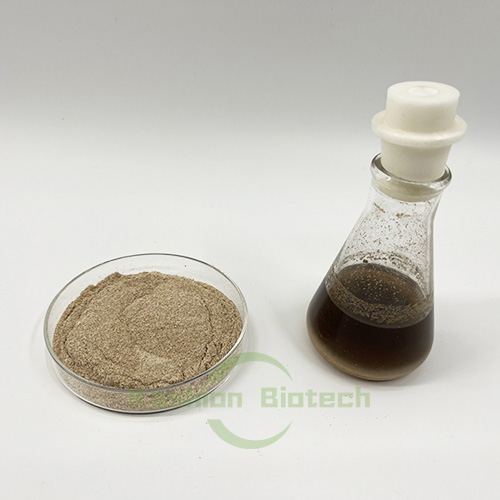
Home Products Sewage Treatment Bacteria Municipal Sewage Treatment Effect of sludge concentration on nitri
There are many factors affecting nitrification reaction, including pH, temperature, DO, BOD/TKN, sludge concentration, toxic substances, etc.

1. In the process of aerobic nitrification, the concentration of nitrifying bacteria is relatively higher with higher sludge concentration, so the rate of aerobic nitrification reaction is higher under the condition of high sludge concentration.
2. A certain sludge sludge age is the condition to ensure the existence of nitrifying bacteria in biological sludge. At the same time, creating good living conditions for nitrifying bacteria can also improve the proportion of nitrifying bacteria in microbial flora, so as to improve the concentration of nitrifying bacteria. At high sludge concentration, more BOD will be consumed in the anaerobic stage, and the BOD/TKN will be relatively lower in the aerobic stage.
3. Some studies have shown that the proportion of nitrifying bacteria in activated sludge is inversely proportional to BOD/TKN. Since nitrifiers are autotrophic bacteria, the concentration of organic matrix is not the limiting factor for their growth. However, if the concentration of organic matrix is too high, the heterotrophic bacteria with high growth rate will multiply rapidly and compete for dissolved oxygen, which will make the autotrophic bacteria grow slowly and the aerobic nitrifiers will not get the advantage, thus reducing the nitrification rate.
4. DO value is generally an important index in the nitrification stage of sewage treatment plants, and it is generally above 2mg/L. In most oxidation ditch processes, the average DO value in the ditch is difficult to reach 2mg/L and generally maintained at 1mg/L or lower, but the nitrification effect is still good. The analysis reason is that the concentration of sludge in the oxidation ditch is relatively high. Although the DO value in the ditch is low, other factors conducive to nitrification are enhanced.
5. With the increase of sludge concentration, the effective volume of biological treatment tank is increased and the load is reduced. From another point of view, the increase of sludge concentration, the microbial good oxygen also increased, under the same aeration conditions, the value of the dissolved oxygen meter should be lower. The above points indicate that the increase of sludge concentration will increase the number of microorganisms and consume more dissolved oxygen, so the detected dissolved oxygen will be relatively low.
6. In order to ensure the normal growth and reproduction of nitrifying bacteria in activated sludge, the sludge age should be controlled at least 8 days. However, in order to make nitrifying bacteria and other hetero bacteria have relatively balanced survival competitiveness, the sludge age should be increased under the premise of not serious aging of sludge, which is to increase the sludge concentration of biological system.
Name: Nicole Yu
Mobile:+86 17718148007
Tel:+86 17718148007
Whatsapp:8617718148007
Email:sales@kashionbiotech.com
Add:No.6, Zhanxi Road, Yaohai District, Hefei City, Anhui Province, China.